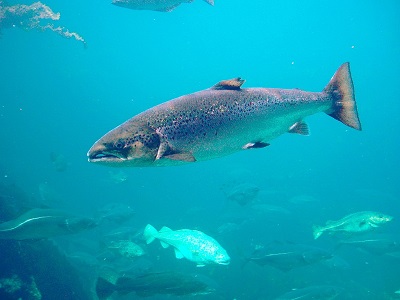There is an invisible biodiversity, no as charismatic as that one appearing in the media and leading conservation campaigns. But it is the one that sustains those more popular animals. This is the case of water invertebrates whose disappearance could negatively affect to river birds and fish of great interest, such as trout or salmon.
This is what a new study carried out by the Doñana Biological Station, in collaboration with British research institutes and environmental organizations, suggests. The aim of this work, published in the Ecography magazine, was to identify which prey traits of these riverine birds and fish best predict the size of their populations. For this, they have assessed prey key traits, prey trait diversity, traditional measures of prey richness and abundance or environmental conditions.
The results indicated that, in general, water invertebrates were the dominant items in their diets and found that these predators have a special predilection for insect larvae living instream areas and with a poor ability to escape by swimming. Therefore, this shows that the specialized diet of river fish and birds could be one of the keys that explains the decline of their populations. "Our work demonstrates the importance of aquatic invertebrates, which are part of that ‘invisible' or less charismatic biodiversity that we don't know but that are necessary to maintain those animals raising more social interest", says Cayetano Gutiérrez Cánovas, researcher at the EBD-CSIC and first author.
The researchers first characterized the diets of four riverine predators – Atlantic salmon, brown trout, grey wagtail and Eurasian dipper – across continental Europe and the British Isles to compile a trait database to reflect their prey spectrum. Next, they used these databases, alongside intensive sampling of 84 Welsh rivers, to compare the ability of different prey biodiversity metrics to predict the size of the four predator populations, and to determine to what extent these four predator species could be sustained simultaneously under current environmental conditions.
The data derived from the study suggest that the loss of the invertebrates on which these fish and birds feed could be one of the reasons that explain their gradual disappearance. "Remember that more than half of the Spanish rivers are in a poor ecological condition. This can reduce the amount of invertebrates that live in rivers and negatively affect the presence of charismatic fish and birds, explains Gutiérrez.
Protect the ‘invisible' biodiversity
The researcher team suggests that the conservation and restoration of rivers and their ‘invisible' biodiversity would not only have benefits related to increasing populations of popular animals, but also to other aspects, such as a better self-purification of waters and a better resistance to climate change.
"This work leaves some interesting questions open. For example, we don't know yet if the ecological improvement of rivers and their invertebrate populations would help to bring back the birds and fish in places where they have disappeared. We don't know what is the level of dependency of other less popular species on these or other aquatic invertebrates or if this could increase the variety of invertebrates that we need to preserve to avoid the disappearance of river vertebrates", concludes Gutiérrez.
Reference
Gutiérrez?Cánovas, C., Worthington, T. A., Jâms, I. B., Noble, D. G., Perkins, D. M., Vaughan, I. P., ... & Durance, I. (2021). Populations of high?value predators reflect the traits of their prey. Ecography. Doi: https://doi.org/10.1111/ecog.05438
https://onlinelibrary.wiley.com/doi/10.1111/ecog.05438


 Las altas temperaturas están provocando que las lagunas y las marismas de Doñana pierdan agua rápidamente
Las altas temperaturas están provocando que las lagunas y las marismas de Doñana pierdan agua rápidamente




